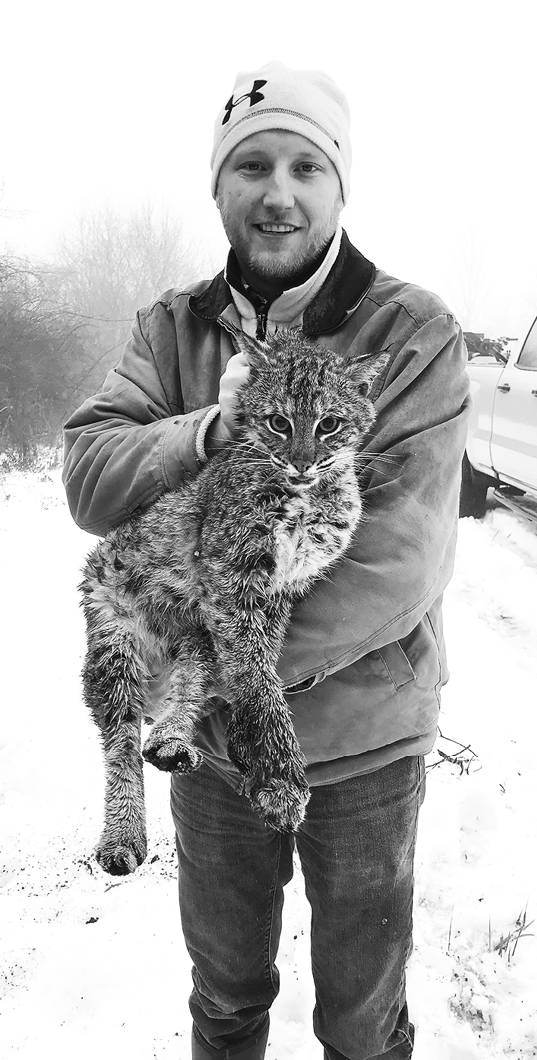
Photo by Jason Hawle
Shane Lewis and bobcat
I’ll come clean that I spend a lot of time fantasizing when I am in the woods. But, rest assured these fantasies are mostly g-rated and they go back in time to the days of the Bering land bridge between Asia and North America and lots of cool animals sauntered over to our neck of the woods. It’s wildly exciting to ponder the presence of lumbering wooly mammoth, ground sloths, and short faced bears taking this route. And I, for one, am sorry that they are not here today as they are very much part of my trail fantasies. But, that’s the deal with fantasies; they operate best when they keep clear of reality. However, one of our local animals, the bobcat, allows me to blur the line as his kinfolk arrived via the land bridge many moons ago.
In addition to appearing on the scene with great panache, the bobcat’s presence has become more common in town. Bobcats have made a comeback in New England partially due to the reforestation of our land.
Bobcats are midsized cats usually weighing between 9 and 40 lbs. with an abbreviated tail, as their name suggests. Their spotted coat helps them to blend into the woodlands that they call home. They eat mostly small mammals such as rabbits and chipmunks. They are most active during twilight and live a solitary existence, except for breeding season. So, while we were bundled under our covers this winter, local bobcats were pairing up. And, anyone who has observed their own house cat will not be surprised to learn that bobcats incorporate typical cat shenanigans including hissing and amorous ambush techniques that never go out of style for the feline set.
In the spring, after 60 days or so of gestation, female bobcats give birth to between two and four kittens. The kittens are raised by their mothers, open their eyes in 10 days and begin to hunt on their own by the end of the summer.
This winter, Suffield’s own Shane Lewis played a crucial role in the Connecticut Bobcat Research Project in conjunction with biologists from the state. The goal of this project was to determine a bobcat’s use of habitat, den and territory patterns. Shane participated in this project by scouting local properties for signs of bobcat foot travel. Once he had an idea of where they were, Shane set live traps along these routes. With nerves of steel, Shane checked the traps every day and managed to capture a female bobcat. She weighed 16.4 lbs. and was transported to the state lab to assess her health, do bloodwork, tag her ear and attach a GPS collar to gather data on her range here in town. She was released that night and the state has been able to track her movements and to pinpoint where she sleeps with the hopes of learning about her den, preferred habitat and her future progeny. Shane told me that 50 bobcats have been captured and collared and that the state will compile information as they follow the data given off by these collars.
Now normally, the word data makes me want to clap my hands over my ears and assume the fetal position. However, in this case I am embracing the information, studying the maps and hoping to time my next hike right so I can share some bobcat excitement. Chances are much better for that type of encounter, so sadly the ground sloth and mammoths will have to remain in my fantasies.